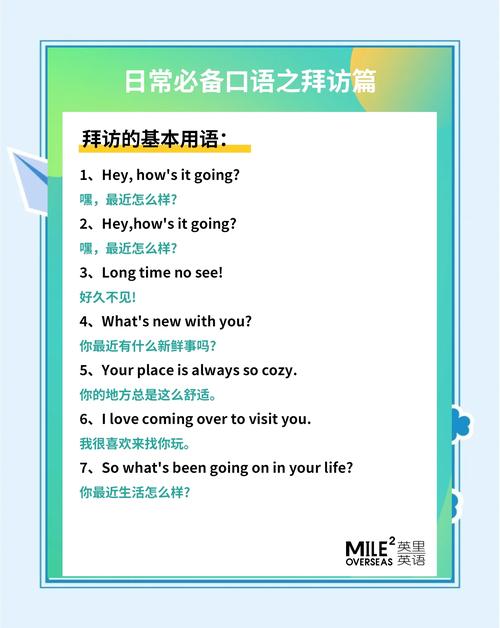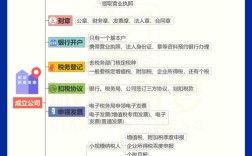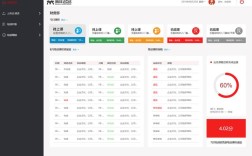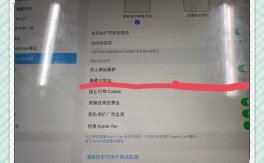在英语中,“拜访某地”的表达方式会根据拜访的目的、正式程度、时长以及具体场景的不同而有所差异,准确选用恰当的表达能让沟通更地道、得体,以下从多个维度详细解析其英文表达及用法。

核心动词及短语的选择
“拜访”在英语中最常用的核心动词有visit、call on/upon、drop by、pay a visit to等,它们各有侧重:
-
visit
这是最通用、最中性的表达,适用于几乎所有场景,无论正式与否,无论拜访目的(观光、探亲、工作等),及物动词后直接接拜访地点,无需介词。- 例句:I will visit Paris next month.(我下个月要去巴黎拜访/游玩。)
- 例句:The doctor visits patients at home.(医生上门拜访病人。)
若强调拜访的持续时间,可用visit for + 时间段:We visited our grandparents for a week.(我们拜访祖父母一周。)
-
call on/upon
较为正式,多指对某人进行拜访(尤其是长辈、上级或客户),较少用于地点,且后接人作宾语,若需指地点,常与at连用。- 例句:We will call on the director tomorrow.(我们明天要去拜访主任。)
- 例句:He called upon his friend at the office.(他去了办公室拜访朋友。)
-
drop by/round
非正式表达,指“顺便拜访、短时间拜访”,带有随意性,常用于朋友、熟人之间,后接地点时用at。 (图片来源网络,侵删)
(图片来源网络,侵删)- 例句:Drop by my place when you're free.(有空来我这里拜访/坐坐。)
- 例句:Can I drop by at your shop for a minute?(我能顺便去你店里拜访一下吗?)
-
pay a visit to
与visit意思相近,但更正式,强调“进行一次拜访”,后接地点或人,结构为pay a visit to + 地点/人。- 例句:The president paid a visit to Japan last year.(总统去年对日本进行了拜访。)
- 例句:I'd like to pay a visit to your school.(我想拜访一下你们的学校。)
-
go to/see
在非正式口语中,go to或see也可表示“拜访”,但see更侧重“见某人”而非“去某地”。- 例句:I'm going to my aunt's house this afternoon.(我今天下午要去我姑姑家拜访。)
- 例句:Let's go see Grandma this weekend.(这个周末我们去看望奶奶吧。)
根据拜访目的的细分表达
不同拜访目的对应特定表达,需精准匹配:
-
工作/商务拜访
 (图片来源网络,侵删)
(图片来源网络,侵删)- visit a company/factory: 参观公司/工厂
例:The delegation will visit the local tech company.(代表团将拜访当地科技公司。) - have a business meeting with sb. at...: 在某地与某人开会
例:We'll have a business meeting with the client at their office.(我们将在客户的办公室拜访并开会。) - conduct a site visit: 进行现场拜访(常用于工程、项目检查)
例:Engineers need to conduct a site visit before construction.(工程师需要在施工前进行现场拜访。)
- visit a company/factory: 参观公司/工厂
-
亲友/社交拜访
- visit relatives/friends: 拜访亲戚/朋友
例:They visit their relatives every Spring Festival.(他们每年春节都拜访亲戚。) - go to one's home/place: 去某人家/某地
例:She went to her friend's place for dinner.(她去朋友家拜访并共进晚餐。) - drop in on sb.: 顺便拜访某人(后接人)
例:We dropped in on our old teacher yesterday.(我们昨天顺便拜访了老老师。)
- visit relatives/friends: 拜访亲戚/朋友
-
官方/正式拜访
- make an official visit to...: 对...进行正式拜访
例:The prime minister will make an official visit to China.(首相将对我国进行正式访问。) - pay a formal visit to...: 对...进行正式拜访
例:The ambassador paid a formal visit to the Ministry of Foreign Affairs.(大使拜访了外交部。)
- make an official visit to...: 对...进行正式拜访
-
短暂/临时拜访
- stop by + 地点: 顺路拜访某地
例:I'll stop by the supermarket on my way home.(我会在回家路上顺路拜访超市。) - pop into + 地点: (英式英语,非正式)突然拜访、短暂进入
例:Let's pop into the café for a coffee.(我们顺路去咖啡馆拜访一下吧。)
- stop by + 地点: 顺路拜访某地
根据拜访场景的例句对比
以下通过表格对比不同场景下的“拜访”表达:
| 场景 | 中文意思 | 英文表达例句 |
|---|---|---|
| 朋友家做客 | 去朋友家拜访 | I'm visiting my friend's house tonight. / I'm going to my friend's place. |
| 商务考察 | 拜访客户公司 | Our team will visit the client's headquarters next week. |
| 医生上门问诊 | 医生拜访病人 | The doctor visits patients who can't come to the clinic. |
| 顺路取文件 | 顺便拜访办公室拿文件 | Can I drop by your office to pick up the documents? |
| 国家元首互访 | 正式国事拜访 | The president will visit France for a state visit. |
| 旅游观光 | 拜访景点 | We visited the Great Wall during our trip to Beijing. |
| 探望住院的亲人 | 拜望住院的奶奶 | My sister visits Grandma in the hospital every day. |
常见搭配与语法结构
-
时间状语搭配
- 表示“拜访某地一段时间”:visit + 地点 + for + 时间段
例:He visited Shanghai for three days.(他在上海拜访了三天。) - 表示“拜访某地一次”:pay a visit to / make a visit to + 地点
例:She paid a visit to the museum once.(她曾拜访过博物馆一次。)
- 表示“拜访某地一段时间”:visit + 地点 + for + 时间段
-
频率状语搭配
- “经常拜访某地”:visit + 地点 +频率副词(often, usually, sometimes等)
例:I often visit my grandparents on weekends.(我经常周末拜访祖父母。)
- “经常拜访某地”:visit + 地点 +频率副词(often, usually, sometimes等)
-
被动语态
当“某地被拜访”时,用被动语态:be visited by + 人
例:The museum is visited by thousands of tourists every day.(这个博物馆每天被成千上万的游客拜访。)
易混淆点辨析
-
visit vs. call on
- visit:通用,可接地点或人(较少见),如visit Beijing(拜访北京),visit a friend(拜访朋友)。
- call on:正式,多接人,如call on the professor(拜访教授);接地点时用at,如call on sb. at the office(在办公室拜访某人)。
-
drop by vs. drop in
- drop by:通用,可接地点(at)或人(on),如drop by the shop(顺路拜访商店),drop by on me(顺便拜访我)。
- drop in:更侧重“突然进入、拜访”,常与on搭配接人,如drop in on a neighbor(突然拜访邻居)。
-
pay a visit to vs. have a visit with
- pay a visit to:拜访某地/某人,如pay a visit to London(拜访伦敦)。
- have a visit with:与某人共度拜访时光,侧重互动,如have a visit with my cousin(和表兄一起拜访/相聚)。
相关问答FAQs
Q1: “拜访客户”用英文有哪些表达?如何区分正式与非正式用法?
A: “拜访客户”的英文表达有:visit the client, call on the client, have a meeting with the client, see the client。
- 正式用法:visit the client(通用商务),call on the client(强调对客户的尊重,如初次拜访或重要客户),如“We will call on the key client next Monday.”(我们下周一将拜访重要客户。)
- 非正式用法:see the client(口语化,适用于日常沟通),如“I need to see the client about the new project.”(我需要去拜访客户谈新项目。)
若强调拜访目的,可用visit the client for + 具体事由,如visit the client for product demonstration(拜访客户进行产品演示)。
Q2: 如何用英文表达“去某人家拜访”和“去某地拜访”,语法结构有何不同?
A: “去某人家拜访”和“去某地拜访”在英文中结构相似,但“某人家”常用所有格或名词所有格表示所属关系。
- 去某地拜访:visit + 地点(名词),如visit the library(拜访图书馆),visit the park(拜访公园)。
- 去某人家拜访:visit + sb.'s + home/house/place,或go to + sb.'s + home/house/place,如visit my uncle's house(拜访我叔叔家),go to Grandma's place(去奶奶家拜访)。
注意:口语中“去某人家”也可简化为visit/go to + sb.'s,如visit my friend's(拜访我朋友家),但需确保上下文明确“家”的含义,若强调“拜访某人”而非“去某地”,则用visit sb.,如visit my aunt(拜访我姑姑)。











